Schließen

Name two tissues in the leaf that transport substances around the plant [1 Mark]
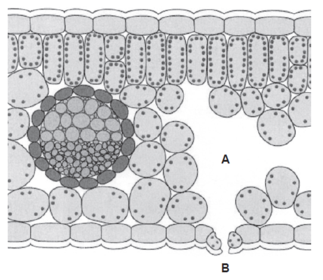
Gases diffuse between the leaf and the surrounding air.
What is diffusion? [2 Marks]
Name one gas that will diffuse from point A to point B on the diagram on a sunny day. [1 Marks]
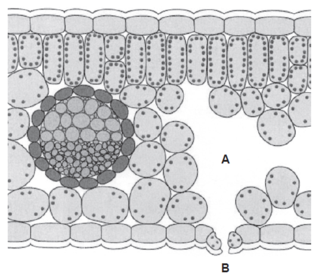
Some students were asked to investigate the distribution of clover in a field of grass. They noticed that the clover grew in patches among the grass. The students decided to use quad rats.
Describe how the students should decide where to place the quad rats to investigate the
distribution of the clover. [2 Marks]
The diagram shows one of the quad rats the students used. Estimate the number of squares of the quad rat covered with clover. [1 Mark]
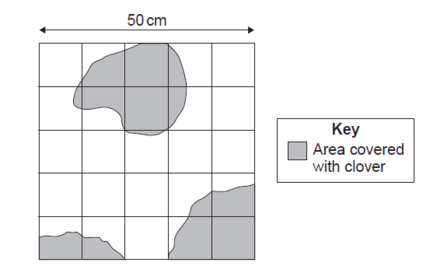
Describe how your worked out your answer to the last question [1 Mark]
Use your answer from the diagram to calculate the percentage of the quad rat covered by
the clover.
(2 marks)
Suggest one factor that could account for the distribution of the clover plants. [1 Mark]
What is the optimum (best) pH for the action of enzyme Z? [1 Mark]
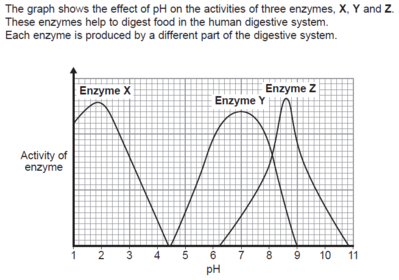
The stomach makes a substance that gives the correct pH for enzyme action in the
human stomach.
Name this substance. [ 1 Mark]
Which enzyme, X, Y or Z, will work best in the human stomach? [1 Mark]
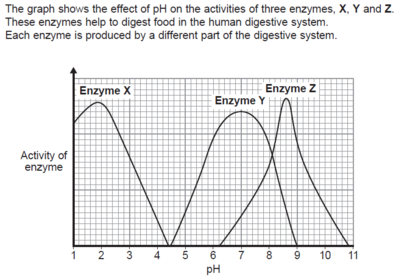
QWOC-Different parts of the human digestive system help to break down molecules of fat so
that they can be absorbed into the body.
Describe how.
To gain full marks you should refer to:
the enzyme and where the enzyme is produced
the products of digestion
any other chemicals involved. [6 Marks]
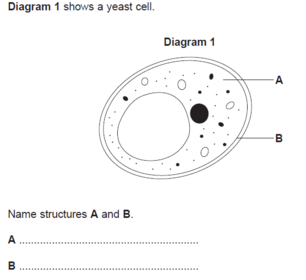
Yeast cells can respire anaerobically. The equation for anaerobic respiration in yeast is:
glucose alcohol + carbon dioxide (+ energy)
Give one way in which anaerobic respiration in yeast cells is different from anaerobic
respiration in human muscle cells. [1 Mark]
Complete the equation for photosynthesis.
.............................. + water
light energy
.............................. + ..............................
[3 marks]
The rate of photosynthesis in a plant depends on several factors in the environment.
These factors include light intensity and the availability of water.
Describe and explain the effects of two other factors that affect the rate of
photosynthesis. [5 Marks]
A certain gene codes for the production of an enzyme called ‘HEXA’. One human genetic disorder causes damage to nerve cells in the brain. This disorder is caused by a small change in the DNA of the HEXA gene. People with this disorder make a changed HEXA enzyme that does not work. Explain how a change in the DNA of the HEXA gene can result in the production of a changed HEXA enzyme that does not work.
The gene coding for the HEXA enzyme is found on chromosome number 15.
How many chromosomes are there in the nucleus of a human nerve cell? [1 Mark]
The boy grew up and got married.
A blood test showed that his wife had also inherited the same changed HEXA gene.
There is a 1 in 4 chance that this couple’s first child will have the genetic disorder.
Use a genetic diagram to explain why.
Use the following symbols in your explanation:
H = allele for making the normal HEXA enzyme
h = allele for making a HEXA enzyme that does not work. [3 mark]
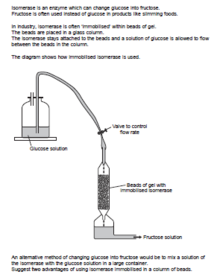
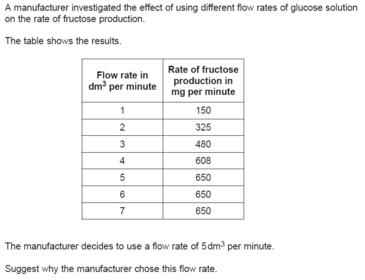
Fructose is a much sweeter sugar than glucose.
Explain why manufacturers of slimming foods may wish to use fructose as a sweetener
instead of glucose. [2 Marks]
How does a chromosome become two strands? [1 Mark]
For sexual reproduction, the plants produce gametes.
Name the type of cell division that produces gametes. [1 Mark]
Explain why each chromosome must become two strands before the cell divides. [2 Marks]
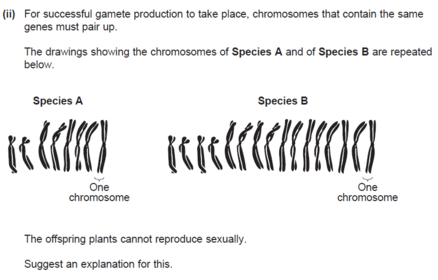

 Verberge bekannte Karten
Verberge bekannte Karten